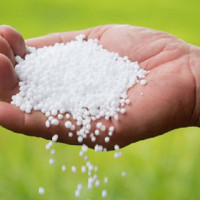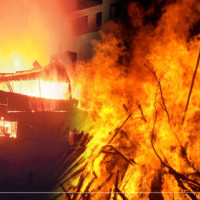- Saturday, 20 April 2024
Ragini puts in exhibition her ‘ A Retrospective of an Artist’
Kathmandu, Mar. 18: Art works of Ragini Upadhyay Grela are currently being exhibited at the Nepal Art Council. A total of 239 pieces, including paintings, prints, drawings and lithographs, created by the illustrious artist between 1978 and 2023, have been kept on display at the re-collective exhibition fittingly titled ‘A Retrospective of an Artist’.
The exhibition began on March 8 on the International Women’s Day, and the Art Council has devoted all three storeys of its gallery building to Upadhyay’s works, musings that provide viewers a glimpse into the four-and-a-half-decade journey that made a student of the Lucknow College of Arts and Crafts, India, the esteemed
artist of today.
“I consider this artistic journey as my life journey,” Upadhyay told The Rising Nepal, “Artists’ arts are shaped by everything they experience, from the ebbs and flows to the ups and downs, from the glitches and circumstances to the places they live in. And in my art, I have moulded the times and situations I have lived through and the thoughts and experiences I have collected.”
“Looking at my paintings from 1978, you can see the shyness, hesitation and a stark difference between girls and boys where the girls look broken and weak while the boys look brave and confident. I was studying art in Lucknow, India, and I have presented the landscape I experienced at
that time through the ‘broken art’.”
Continuing on the theme, Upadhyay ‘s paintings from 1982 to 1985 reflect sadness, scratched faces and lonely lives, highlighting the period of struggle that she went through after her graduation.
Upadhyay ‘s series ‘Goddess and Female Mythology and Reality’ contain particularly poignant works that depict the inequality between men and women in our society. “The same society that venerates women in the images of goddesses paradoxically also views them as inferior and denies
them equal rights,” she said.
Similarly, in her ‘People’s Power’ series, Upadhyay portrays democracy.
Her ‘Gaijatra’ series satirised Nepal’s politics and its never-ending struggle for power.
‘Ragini Yatra’ highlighted corruption, irregularities and social injustices.
After losing her young daughter in 2016, Upadhyay painted her connection with her daughter.
There are a few bonds greater than the bond a mother shares with her child, a bond that begins even before the child is born.
Pregnancy is a beautiful period where the mother’s body changes, her breast and vagina grow tender and her existence connects to the existence of the life in her womb. Upadhyay has depicted this beauty in the form of a beautiful lotus.
Upadhyay has also become an advocate for environment conservation and has used the canvas to represent humanity’s hostility towards nature.
“Nature protects humans. It nurtures human life. Yet, humans are callously destroying it without understanding its importance,” she added.
In her ‘Ashes’ series, she has presented how we are all going to turn into ashes after our death, forcing the viewers to ponder on what they pursue in life and the legacy they seek to leave behind.
“Painting is a therapy for me,” the artist shares. “It has helped me be reborn. When I start painting, I forget everything and deeply immerse myself in it.”
“My grandmother used to tell me tales of all sorts that I feel I have been very influenced by. Those stories, which ranged from myths to religious chronicles, are why my paintings feature many surrealist elements.”
She lamented that the perception of seeing art in Nepal has changed and buyers have also increased, but still the government and stakeholders have not prioritised art like other countries.
The exhibition will conclude on March 22.

















